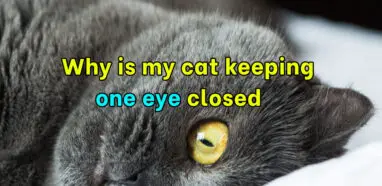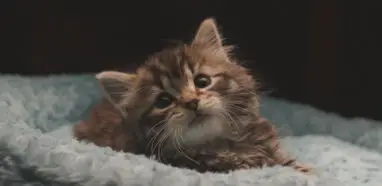Yes, we all love our feline companions and we can do anything for them to keep them happy. Unfortunately, we cannot meet all their immediate needs since they cannot have a direct conversation with us, nonetheless, these little toms are very smart and would still manage to communicate to us with sounds and body language.
Be that as it may, not everyone can understand this language and wouldn’t know what their little friend is trying to tell them even when their health is at risk. For instance when a cat has a dead kitten inside her.
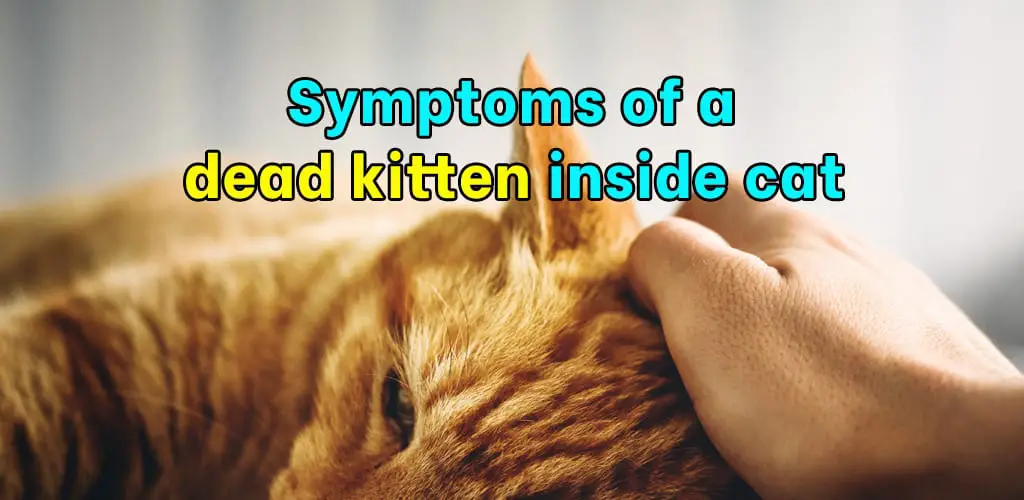
You will find details about the “symptoms of dead kittens inside cats in this article, as well as every other closely related issue. Keep reading for details.
Table of Contents
Does a dead kitten stick inside a cat?
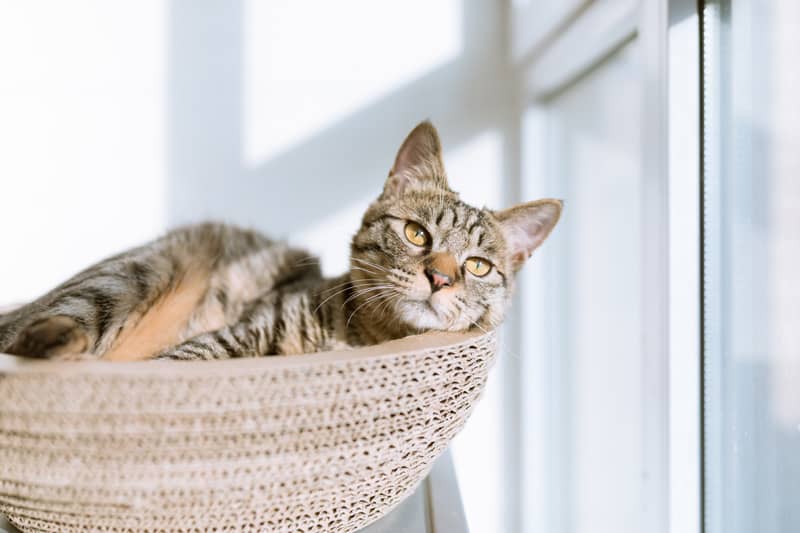
Yes, a dead kitten can be stuck inside a cat. During queening, a cat can experience complications, one of such is a kitten dying inside the cat.
Ordinarily, the dead kitten will rot away inside the mother, which may require the intervention of a veterinarian to bring out the purified body through a c-section.
Notwithstanding, in some situations, the dead kitten may be stuck inside the womb without decaying and become calcified which may later be discovered during a spay surgery.
How to tell if a cat still has kittens inside
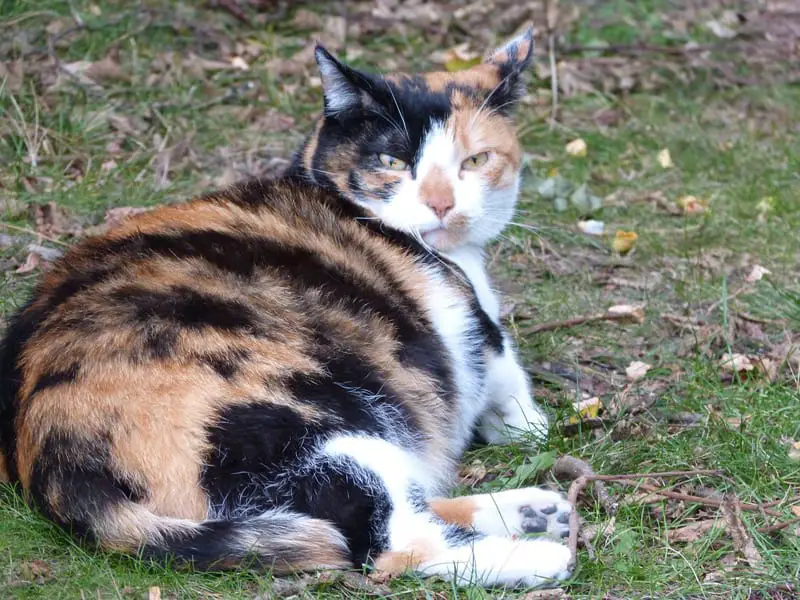
1. Panting
One of the signs that shows that a cat is in labor is heavy breathing because a lot of energy is drained during the queening process which most of the time can be so uncomfortable.
Accordingly, if after delivery and you notice restlessness or your cat is panting heavily, it could be a sign that there are more kittens underway. Although that may not always be the case so if you notice that the panting has continued for a long hour without any birth, call the attention of your vet for advice on the next line of action.
2. Straining
The process of queening has 3 stages, and it is very common to see cats strain or bear down during the last 2 stages. This is because of the difficulties associated with giving birth and the series of uterine contractions that are involved.
During this difficult moment, cats strain to gather strength to push out kittens and once they deliver, they start to clean the newborn kitten by licking their body before straining for the next delivery.
Usually, straining shouldn’t last for more than 25 minutes, and if your cat has been straining for more than the recommended time, it would be nice to call your vet.
3. Aggression
During and after birth, your cat may exhibit some strange attitudes. For instance, your once-lovely, friendly cat may now become more aggressive than ever. Not only to strangers but also to you whom she considers being her favorite person.
When this happens, just give your feline friend a little space to gather herself as this is merely a natural protective mother instinct that is considered to be a natural behavior to them. Unfortunately, there’s no timeline as to when to call in a pet behaviorist if the aggression continues for a while because it carries from cat to cat.
4. Vocalization
The process of giving birth in cats is as much as painful as it is in humans. Both experience a significant amount of pain during birth.
One sure way for you to know that your cat is in pain is that she will vocalize in high pitch than she normally would when making similar sounds for attention. Hence, if after delivery, she continues to vocalize, there’s a possibility that more kittens are still coming.
If the vocalization continues for long with no result, then you can for the assistance of a vet.
5. She focuses more on herself
Under normal circumstances, after giving birth, a mother cat will tend to her kittens by licking their body.
If after giving birth, you noticed that instead of doing this, your cat completely ignores her motherly duty and gently crawls back to her corner, it may also be an indication that more kittens are still coming. Although this may not always be the case so you might want to call your vet for advice; some health issues may be preventing her from performing her duties.
6. Lost of appetites
Throughout the delivery process, a lot of energy is exhausted which can only be replenished through food intake. Likewise, after giving birth, a mother cat needs to be able to acquire the necessary nutrients to raise a healthy kitten.
Regrettably, it may sound completely absurd to think that most cats lost their appetite after queening, but in reality, that’s one of the psychological effects of birthing on cats.
Therefore, if you notice that your cat refuses to eat after giving birth, it may indicate that your cat still has more babies coming. If this drags for a long time though, you should call the attention of your veterinarian.
7. Ultrasound headcount differs from the actual delivery
Just as human beings go for an ultrasound to determine the gender and the number of expected babies, many pet owners also take their pregnant cats to the veterinarian to carry out ultrasounds on them for similar reasons.
If by chance the number of kittens delivered by your cat differs from the total headcount pronounced during an ultrasound, there’s a possibility that your cat still has some more babies inside her. In a situation like this, it will be expedient for you to call your vet for advice on whether there will be a need for another ultrasound session.
8. If you did not see any placenta after the last delivery
Normally, after a kitten is delivered, it should be accompanied by a placenta or afterbirth or in some cases rapid delivery when multiple kittens are born at the same time, such birth is followed by several placenta.
If in your situation, after waiting for about 15 minutes (the standard time for a mother cat to expel the placenta after birth) you do not notice the placenta after your cat delivered the last kitten, there’s a possibility that your cat may give birth to more kittens. Although it may also mean that your cat has consumed the afterbirth so you might want to call your vet for advice on what is
How do you know when cat labor is over?
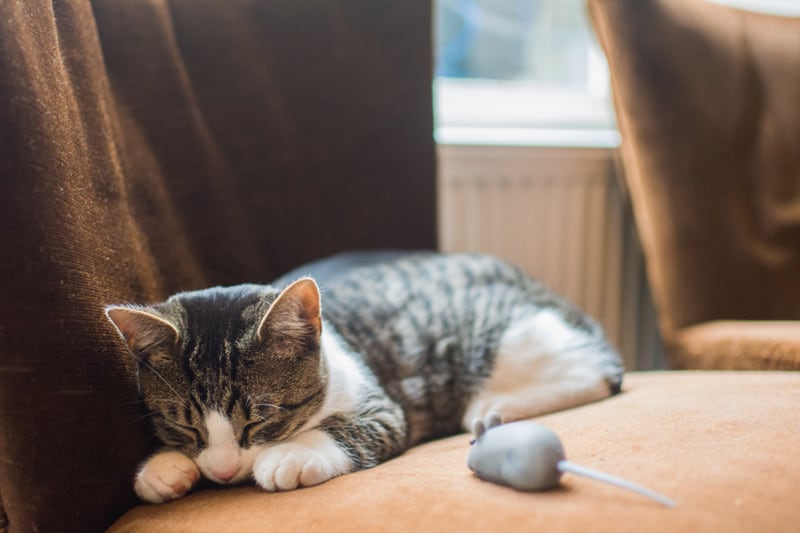
1. She focuses on her newborn
If after giving birth to the last kitten, you noticed that the attention of your cat has now shifted completely to her kittens; licking them and some are even suckling her. Then that’s a sure indication that your cat is done with labor. If not, she will be more focused on delivering the other kittens that are still inside.
2. Check for contractions
Before the queening process start, female cats experience contractions which is necessary to push the baby down the birth route sp delivery can take place. Usually, this contraction can be readily felt by placing your hand gently on the belly of the pregnant mother or keenly watching the movement of the abdomen.
If after going through this process, you cannot feel any contraction it is likely that your cat has delivered all her kittens.
3. She stopped straining
Once your cat starts to have a contraction, the next physical reaction is staining, which is usually a response to the discomfort that comes with uterine contraction. Normally, your cat should deliver her first kitten after about 30 minutes of straining every other kitten should follow every 10 to 60 minutes afterward.
So, if you noticed that your cat has stopped straining after the last delivery, then she may be done with labor.
4. Normalized breathing
During the first stage of your cat labor, which is supposed to last for about 12 hours, you will notice that your cat will begin to pant right from the onset.
You may think that with time, this will subside, but that’s not true, because the panting will continue throughout the delivery process unless she is done with labor. This is why the breathing rhythm of a female cat is a good indicator of whether or not she is done with labor.
5. Do cats give birth all at once?
No, cats do not give birth all at once. Cats are not male seahorses that can give birth to hundreds of babies at once, they come out one after the other. Although the delivery time for each kitten differs from cat to cat. In some, it may be a matter of minutes or hours, while in some the time interval between deliveries may be up to a day.
How do I know if my cat gave birth to all her kittens?
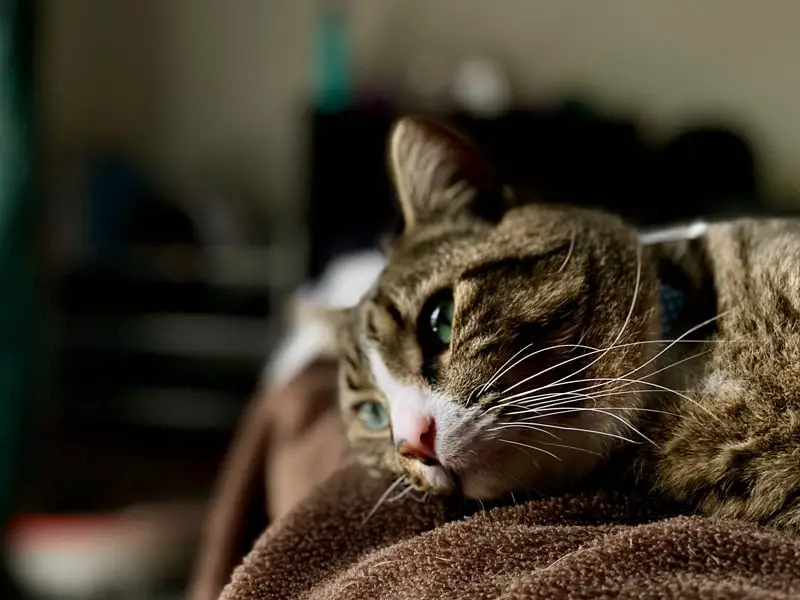
The first thing you would notice after your cat has given birth to all her kittens is that she would lose weight. This is because her stomach will shrink once all the kittens have been delivered. A protruded stomach after birth, although not in all cases is an indication that your cat may still have a kitten inside her.
Another key thing you should be on the lookout for is any sign of dehydration. After childbirth, your female cat will more than ever will be in constant need of water. So if you noticed that all your cat wants after experiencing labor is water, know that she had likely given birth to all her kittens.
How long does it take for cats to give birth to kittens?
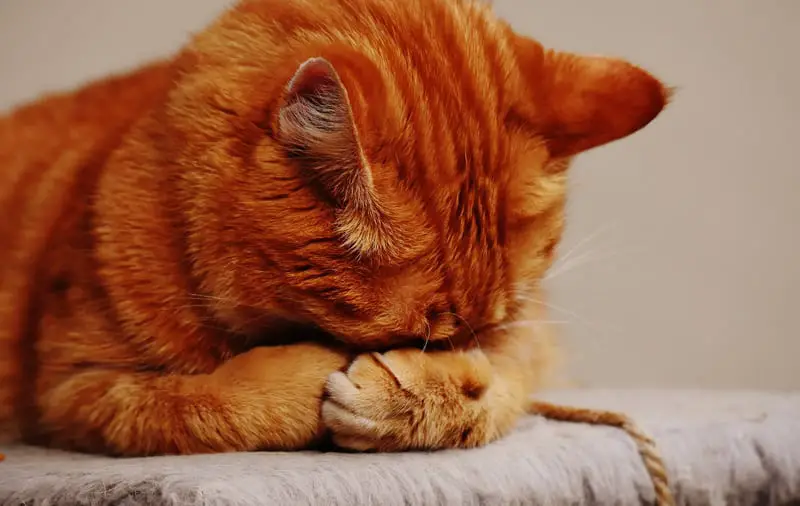
The time interval for a cat to delivering between kittens is an hour max. Although in some situations, it can take more than an hour, so it is best to study the first birth process of your cat closely, and seek advice from a vet if there’s any delay. This will put you ahead of the situation in case of a similar occurrence in the future.
What should I do if my cat still has a kitten inside?
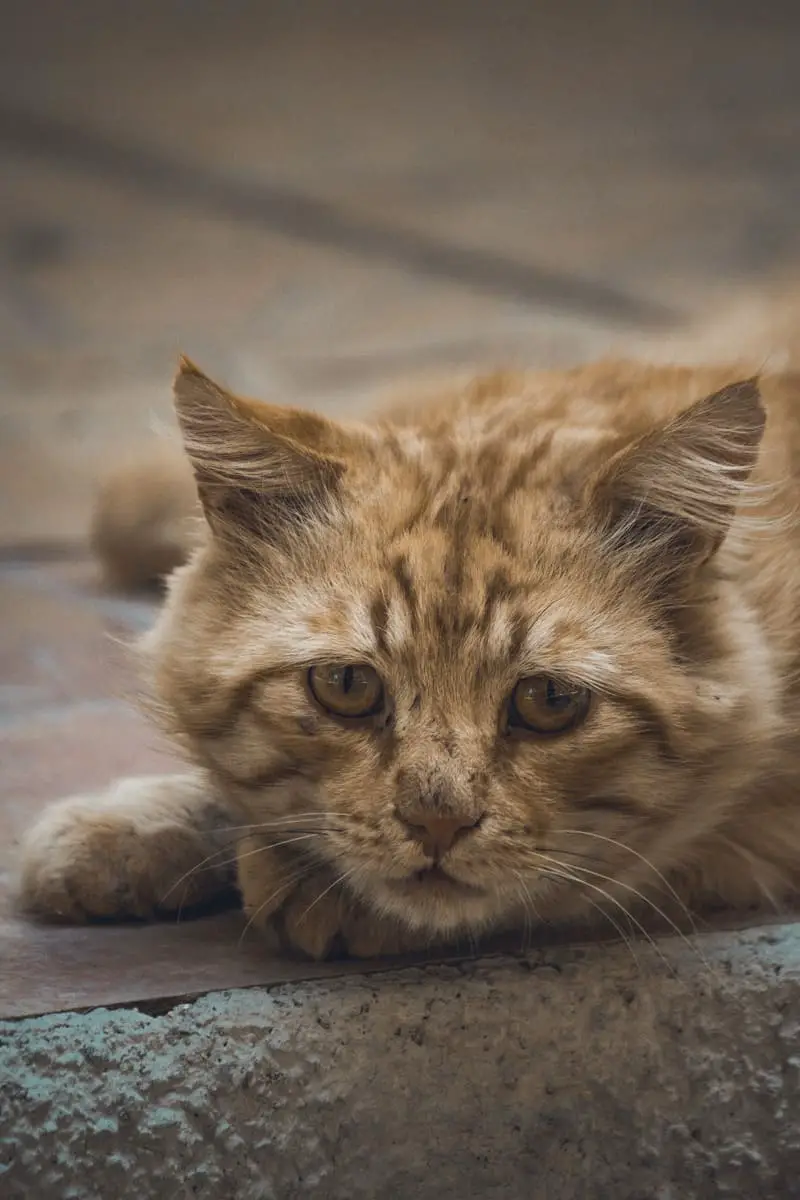
If all signs point to the fact that your cat still has a kitten inside her, gently touch the abdomen and feel the lump. Doing this will allow you to determine any movement and know the status of the kitten whether dead or alive. You must do this because if your cat fails to deliver the last kitten, she may have a fever and the kitten may end up dying. If you cannot feel any movement, the kitten is likely dead.
If the kitten is still alive, it should be able to make its way down to the birth route and then to the midpoint of the lower abdomen. If this seems difficult, you can assist your cat by fumbling the lump and pressing it continuously as gently as you can above the one side of the shape of the kitten to enable it to turn in the normal direction.
You must take care not to force it in any direction though as it is a normal occurrence if the cat is still in labor and she has a kitten inside her.
If she stopped laboring and you can still feel a lump almost the size of other delivered kittens, then there’s nothing you can do other than to call your vet so that necessary steps can be taken to bring out the kitten that is left behind.
Is it normal for cats to give birth to only 1 kitten?
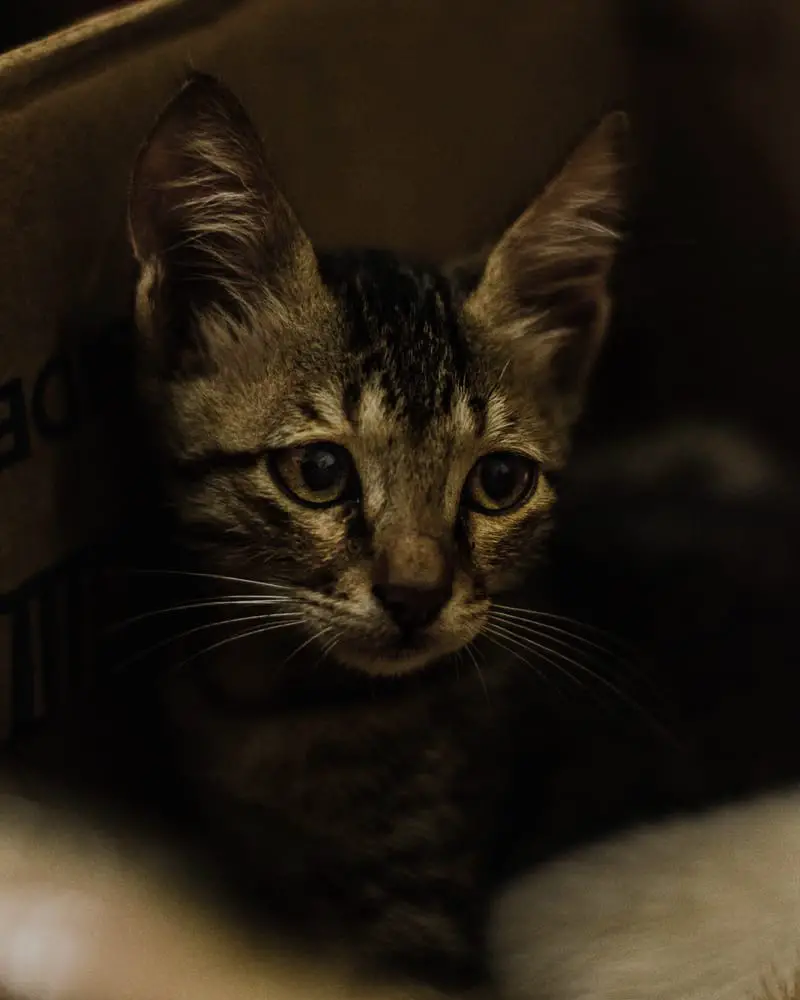
Yes, it is normal for cats to give birth to only 1 kitten. Although it is a rare occurrence to see a cat have just only one kitten in a litter because usually, a cat should have an average of 3 to 4 kittens in a litter.
If your cat gave birth to only one kitten, you do not have to worry though because there’s nothing abnormal about it. If you are not convinced though, you can check with your vet to help you look into the possibility of infertility.
Is it normal for a cat to only have 2 kittens
Yes, it is normal for cats to have just 2. You may have seen or heard or even discovered in your research that cats should have a minimum of 4 kittens in a litter, yes, your discovery may not be entirely far from the truth, but that does not make giving birth to 2 or lesser kittens impossible or abnormal.
In fact, If your mother cat is a first-timer, there’s a great possibility that she’s going to have only two kittens. You might want to check the indicators explained earlier in this article to guide your decision concerning whether or not your cat is done with labor though.
What determines how many kittens a cat has?
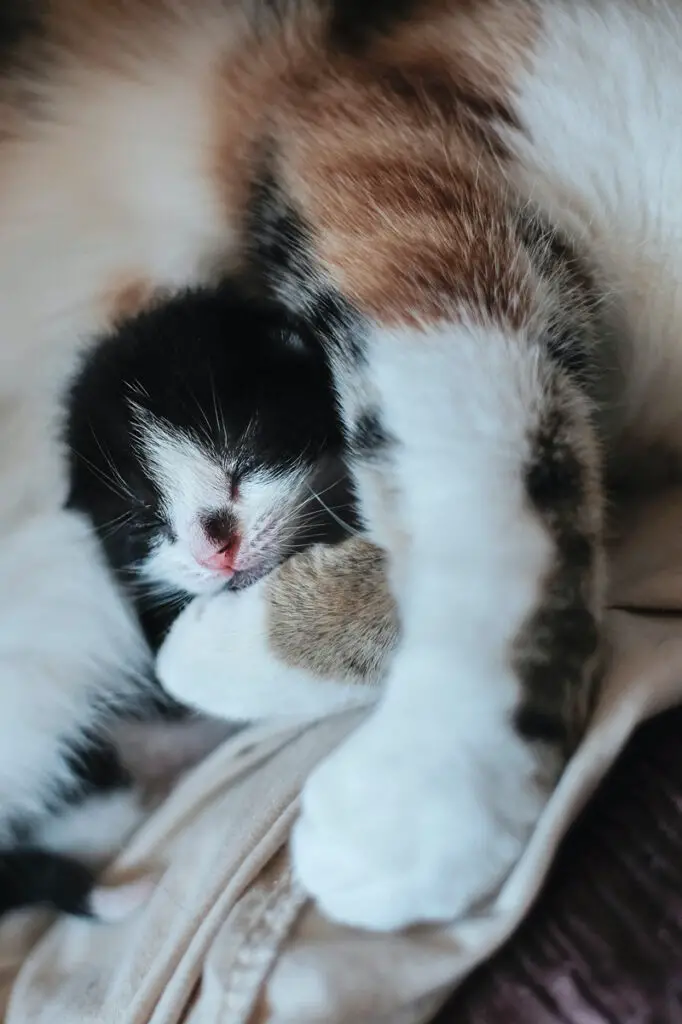
1. The age and health of the mother cat
There are lots of factors that determine how many kittens your cat will have. The first determinant factor is the health and age of your cat. If your cat is super healthy and young, she’s likely to have larger litter compared to another with poor health that is also older.
Age is also a factor because a cat mother giving birth for the first may have limited the number of litter in comparison with an experienced mother cat. This factor is usually downplayed though because a healthy first-timer cat is likely to have more litter than previously envisaged.
2. Cat breed
The second on our list is the breed of cat you keep. This just has to be included in our list because it has to do with genetics which has always had a direct impact on offspring. If you have a cat species known to have large litters.
For example, the Siamese breed, your cat is bound to produce many kittens.
On the other hand, if you keep the likes of Mint and Persian breeds, your pet is likely to provide you with fewer kittens because these breeds are notorious for having small litters.
Therefore, before deciding on which cat breed to keep, always check what you want, and determine whether you want a large cat family or not.
3. The season or the prevailing weather condition
Every female cat must go through the Estrous cycle which is also known as the heat cycle. These cycles get mother cats ready for mating, and a theory has it that the more a female cast mates, the higher the chances that she will have more litter which makes the estrous cycle a key determinant factor.
Most outdoor cats go into heat during spring and fall and stop their heating cycle when the weather gets cooler and the days are shorter.
On the other hand, indoor cats most of the time know nothing about seasonal changes and therefore, they go into heat more than their outdoor counterparts. The only problem now will be whether or not your cat has access to a male cat.
4. Illness
This is in some way related to the first factor mentioned in this article albeit with a slight difference. If you care so much for the fertility of your queen, you must look after her wellbeing, if that is not appropriately checked, your beloved cat may be susceptible to certain infections and diseases which may affect her litter size.
One of such is the feline panleukopenia virus which can drastically reduce the number of kittens to be born. This infection is responsible for stillbirth and abortion of litters that occur at the early pregnancy stage of an infected female cat.
One sure way to prevent this infection is by watching the diet of your queen. Consult your vet for advice on suitable intakes for an expectant mother cat.
Can cats have stillborn kittens?
Yes, cats do have stillborn kittens. Sometimes, cats give birth to dead kittens, which are usually referred to as stillborn. Most times, cases like this are often caused by fatal defects or deformities. And according to a study, it was discovered that 1 out of 20 newborn kittens is stillborn which makes this anomaly common to cats.
What does a stillborn kitten look like?
You can easily identify a stillborn kitten with its naked body (no fur) and ravaged skin.
What to do when a cat gives birth to a dead kitten
If you found out that your cat has given birth to a dead kitten, do not immediately take it away from her, just leave it there for some minutes until she finally abandons her to take care of other kittens that are alive. Once she abandons the head kitten, you have two choices, either you call a veterinarian or the local animal caretaker in your area. These people have different responsibilities.
The local animal caretaker will help you with the disposal of the dead kitten while the veterinarian will help to run tests on the mother to see if she is having bacteria or viral infection that could endanger the lives of other kittens. Your vet may also want to check on the other kittens to see if they have been infected or not.
Why is my cat’s stomach still big after giving birth?
If you are cocksure that your queen has completely delivered all her kittens, yet, she still has a bulging stomach, the best decision you can take is to call your vet immediately.
Although a protruding stomach does not necessarily mean there’s an infection or complication, it is not something out of ordinary. Nonetheless, you have to call your vet for assurance that your cat is safe.
Is it possible for a cat to give birth days apart?
Yes, it is very much possible for kittens to give birth days apart. There’s nothing strange if cats delay their labor and give birth to their kittens on two different days. In fact, there are some instances where vets would advise that you allow your cat to rest between labor to gather some more energy.
Cats have a remarkable ability to delay their labor for about 24 to 36 hours without suffering any complications. She uses this short break to look after the delivered ones and even feeds them.
Can a cat die after giving birth?
Yes, a cat can die after giving birth. Although this is quite unfortunate, it is a sad reality that a mother cat can die after giving birth.
This happens most times when there are complications in pregnancy. Even though most cats can handle the queening process by themselves, it is usually recommended that as their owner, you should assist them through the process so that you can come to their aid when need be.
If a pregnant cat die, can the baby survive?
Yes, kittens can survive if their mother died during or after queening. If a mother cat dies during queening as long as the kittens are ready for birth and the death of their mother is not related to infection, trauma, illnesses, or virus.
Note that, this can be possible only with the quick intervention of a veterinarian who shall be on ground to supply the kittens with the needed oxygen after bringing them out followed by good nursing care.
What happens if a cat doesn’t give birth?
If your female cat doesn’t give birth, she may be suffering birth difficulties which may be a result of mechanical blockage or uterine inertia.

The unique literary talents of Dr. A. Barton are well known throughout the veterinary profession. He is a regular contributor to the New York City Veterinarian and his professional articles have also appeared in the Journal of the American Veterinary Medical Association, Journal of Small Animal Medicine, Veterinary Medicine, Cornell Veterinarian and Philadelphia Medicine. He is the only veterinarian ever to have had an article published in the human medical publication, What’s New.
